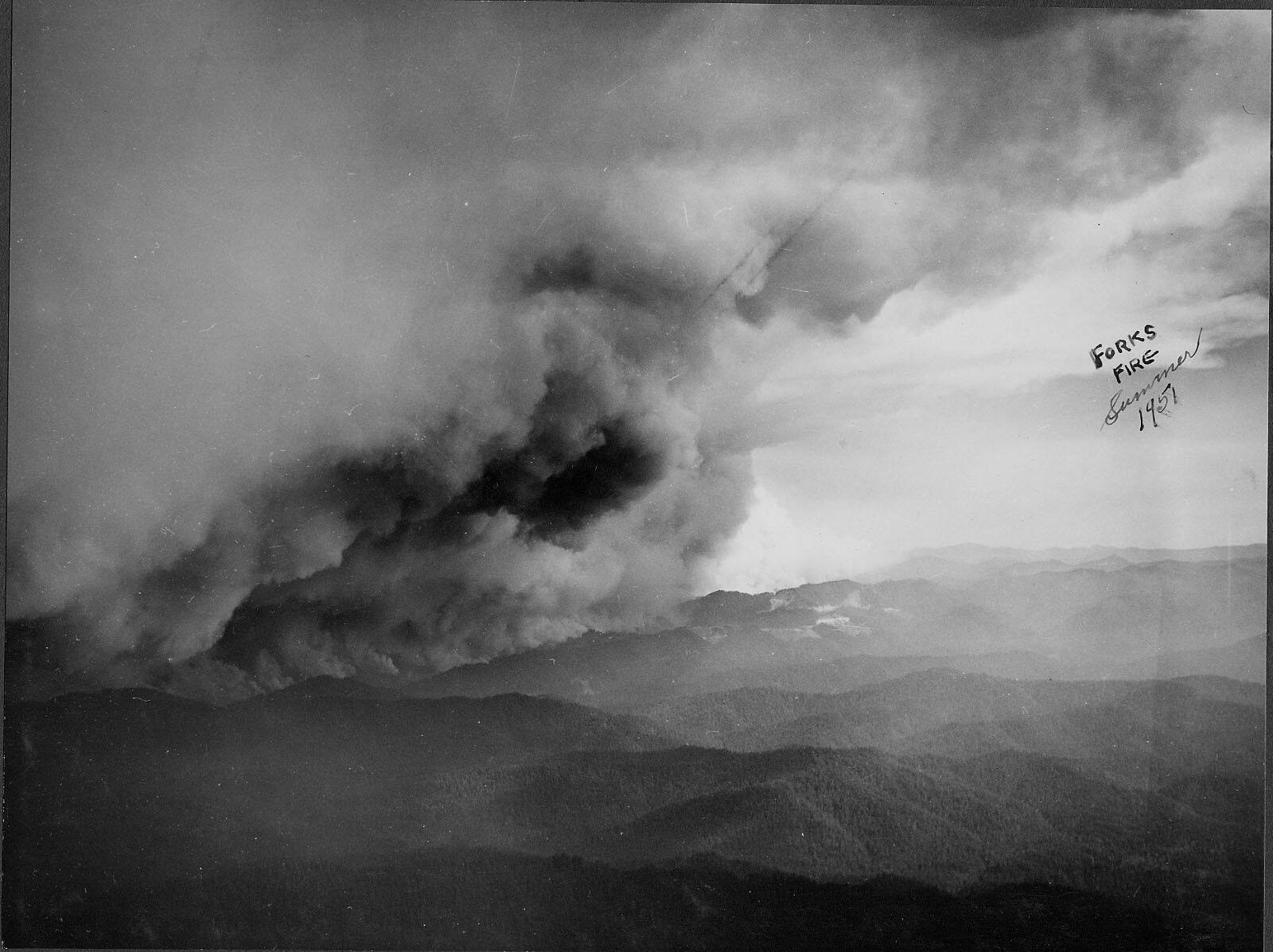September 1951
A forest fire larger than any in memory on the Olympic Peninsula struck the Calawah River valley and the community of Forks, Washington on September 20, 1951. The fire burned nearly 38,000 acres overnight, and brought the small community of Forks together in an immediate desperate effort to save the town. The fire had a long-term impact on the community, changing the logging industry in the area for many years to come.
After the Fire
The fire had 620 million board feet of timber in its path. By a crash program of logging, five-sixths of this timber was salvaged with timber companies bringing in logging crews from other areas because it was imperative the timber be processed before pests attached themselves to the charred trees. Soon a million feet a day was being logged and 160 logging trucks were averaging three trips each a day into Port Angeles. Some operators dumped their logs at Pysht where they were boomed and towed to mills at Tacoma and Everett. Forks boomed – the housing shortage became acute and many new homes were built – there were jobs for everyone who wanted work. Rayonier Incorporated chemists under the stress of necessity, made an important breakthrough. Previously it had been impossible to use burned timber for pulp. The chemists found a method to remove the charcoal and logs from the Calawah Burn went into the pulp digesters. Salvage was completed in 1956 and the burned-over area was restocked by seeding and planting of young trees.
Losses to the Fire
The fire covered an area of approximately 38,000 acres, a combination of privately owned, state land, and national forest land. In Forks, several homes, businesses, and shops were destroyed. Some logging equipment and machinery was also lost to the fire, and logging railroad tracks were destroyed. In spite of the overall devastation of the area and the property damage, there was no loss of life.
During the Fire
The Forks Fire started around 3 a.m. on September 20, 1951, in the Olympic National forest near Camp Creek, flaring up from the Sol Duc fire. The fire, fanned by high winds, traveled 18 miles in less than 8 hours. Residents of Forks awoke that morning with the rapidly moving fire on the horizon and threatening the town.
Burning a path nearly three miles wide, witnesses told of flames 500 feet in the air, with embers and ashes landing in the town of Forks. As the town became threatened, crews mobilized to cut fire breaks to stop the fire and save the town. Residents of the town were evacuated, leaving town with what prized possessions they could carry, and no guarantee that the town would survive the fire for their return.
Before the Fire
The summer of 1951 was extremely dry, with rainfall less than 15% of normal. June, July and August of 1951 recorded a total of 1.15 inches of rainfall in Forks, compared to the normal average for the same months of 8.20 inches of rain. The extreme dry conditions brought several forest fires in the northwest, from Oregon to British Columbia.
On August 6, a fire started near Camp Creek, apparently caused by sparks from a logging train on the Port Angeles and Western Railroad. The fire burned for several days before being brought under control, covering nearly 1,600 acres. Spot fires continued to be a problem for several weeks after the fire was controlled, and firefighters regularly patrolled the fire area.
On September 20, a sudden drop in humidity and a strong easterly wind allowed a hot spot to erupt into a fire that spread rapidly, burning thousands of acres and dramatically changing the small community of Forks, Washington.
More photos and information including videos can be found at content.lib.washington.edu/cmpweb/exhibits/forksfire/index.html



